I'm trying to develop a circuit that allows me to effectively subtract two different sources of RF noise from a single signal at the same time. I am planning to use something called a "trifilar" transformer, which is effectively a transformer with 3 separate windings. My thinking is that, if I input my original noisy RF signal on one of the windings, one type of RF noise on the second winding, and the other type of RF noise on the third, that the signal can be recovered.
I've heard of this configuration called a "hybrid combiner" which allows you to get the sum and difference of two different signals using this three-winding transformer, using common-mode rejection, like a choke.

In effect, what I would like to do, is subtract two different separate signals from a third signal. I realize this is a poor way of describing what I want to do, so I've included a diagram below with equal turns for each of the three windings (note the dot convention):

Of course, the DC signals won't be transmitted from winding to another, so that isn't relevant, but I add them for generality.
My question is, when you input signals (or noise) to each of the windings of a transformer, how do they react? In my typical experience, a transformer has two windings, one of which is the "input" (or primary) and the other is the "output" (or secondary). What happens when all three windings (primary, secondary, tertiary[?]), have currents applied to them?
Is it possible to recover the original signal?
Thanks!